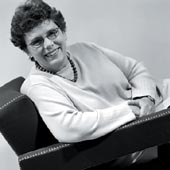Royal College of Art, London
Interaction Design
September 25, 1998
One of the world's leading programs in Interaction Design
is the program in Computer
Related Design at the Royal
College of Art in London. From their web page:
As new technologies develop, new fields of design emerge.
This course is one of the pioneers of a new field - interaction
design, the design of interactive products and experiences all
now made possible by information technology. Though the course
concerns design for emerging technologies, its focus is more
on people than technology. It is about designing things that
people will use and enjoy, drawing information technology into
everyday culture.
Computing, electronics and telecommunications are rapidly
merging to produce new products and media. The CRD course is
currently involved in three main areas of work:
- Interactive information worlds: the design of computer software,
CD-ROM, World Wide Web, hypermedia, virtual information spaces
- for fun and function;
- Tangible computing: the design of electronic products, ubiquitous
computing systems, intelligent objects and so on;
- Intelligent environments: the design of spaces and installations
mediated by information and communications technology.
Professor Crampton Smith will talk about the work of her department
and the growing role of artist-designers in the design of information technology
. She will discuss the differing contribution of artist-designers
and engineer designers.
|

<P>Gillian Crampton Smith is the Professor and Department Head
of <A HREF="http://www.crd.rca.ac.uk/">Computer Related Design</A>
and at the Royal College of Art in London, Britain¹s graduate
school of art and design.</P>
<P>After taking a degree in History of Art and Philosophy at
Cambridge University, she followed her long-held interest in
graphic design and worked in book and magazine design, spending
four years on London¹s Sunday Times before going freelance.
At the same time she wrote and designed an innovative series
of comic strips on social topics for high schools.</P>
<P>In 1981 an issue of the typographic magazine Upper & Lower
Case about computers in graphic design inspired her to buy a
computer and to write a program to do magazine layouts on the
screen‹early DTP. Convinced that other designers would have
ideas about the way computers might be used, she set up the computer
studio at St Martin¹s, one of Britain¹s leading art
schools, and started the first graduate program for practising
graphic designers.</P>
<P>She joined the Royal College in 1989. Her experience writing
a page layout tool for designers convinced her of the important
contribution designers could have in the design of the human-computer
interface and she had expected, prematurely as it turned out,
that by the mid-eighties this would be an important field of
work for designers. She restructured the Computer Related Design
program, then a CAD course, to concentrate on how traditional
art and design skills and knowledge could be applied to the design
of information technology. The program has strong links with
industry, including a substantial collaboration with Interval
Research. </P>
|
|
